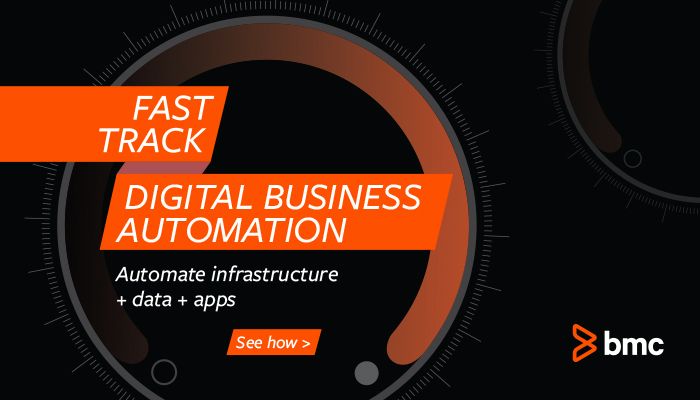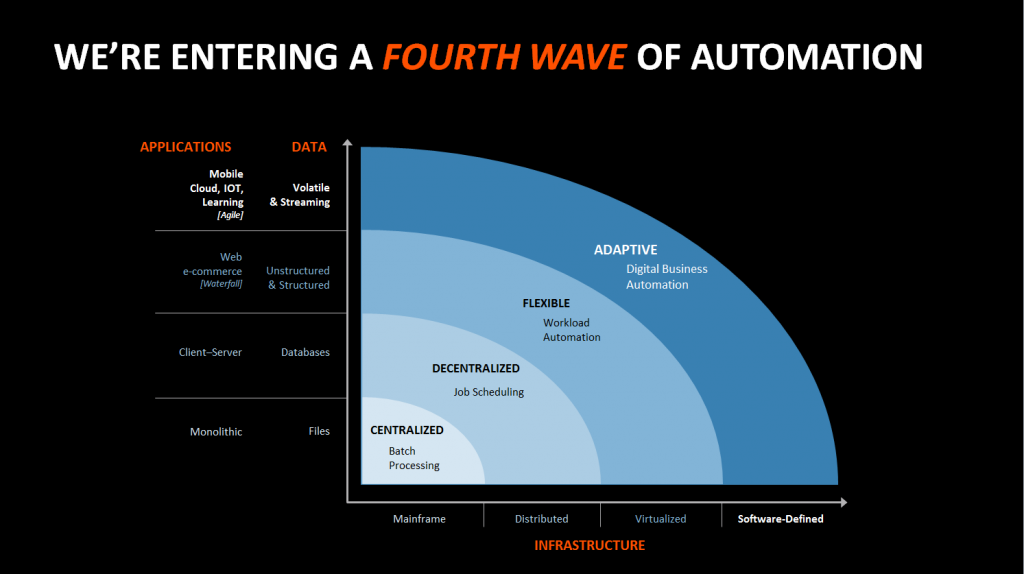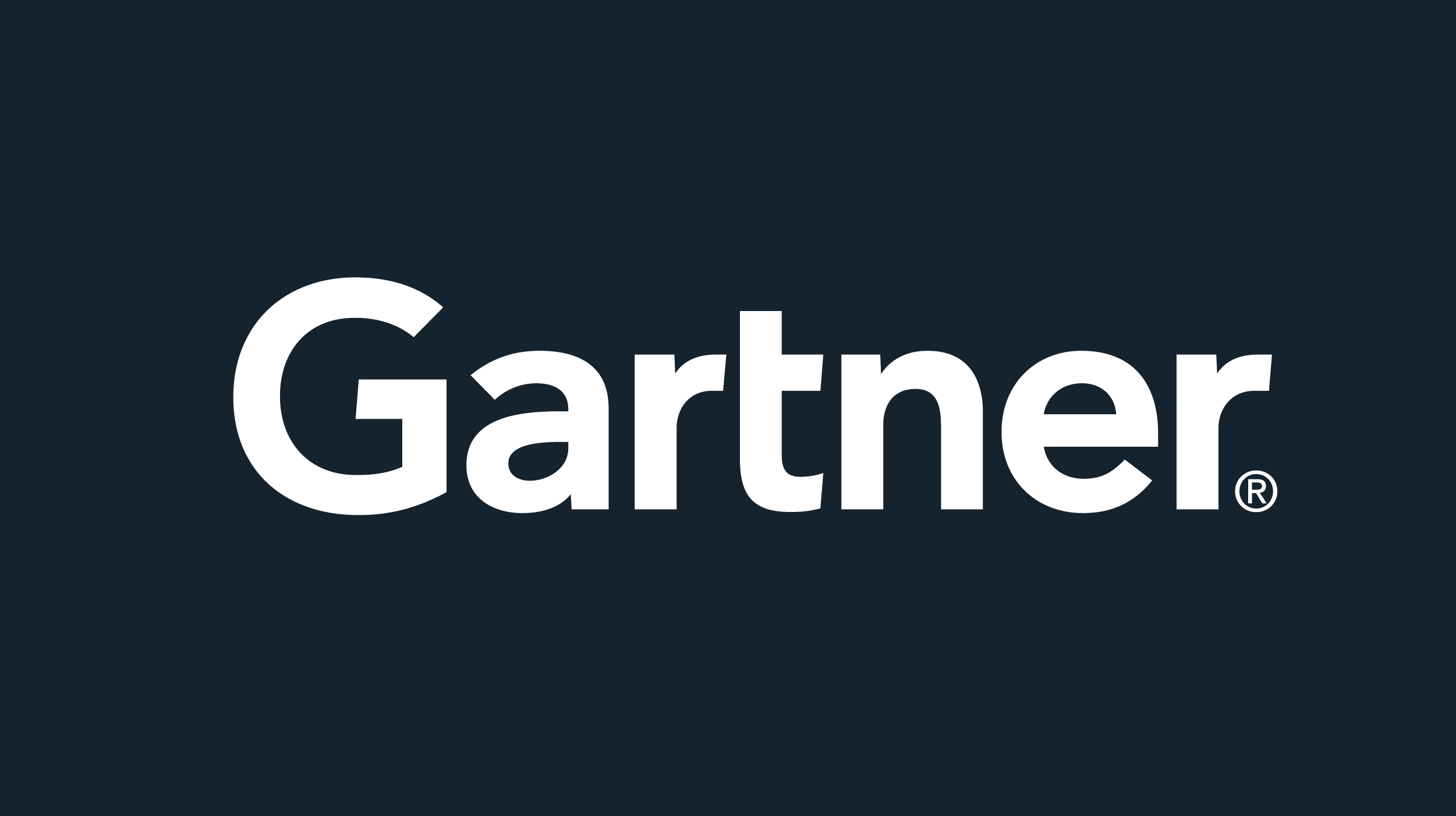Digital disruption is impacting virtually every industry. Companies are under threat from new ‘digital native’ companies and from 100+ year old household names that have jumped onto the digital business wave. If you are a company in-between these competitors, look out. Transforming your company to embrace the digital business future comes at a time when infrastructure complexity, data disparity, volume, volatility, and agile application deployment pressures are increasing at exponential rates. These challenges are real and they are here now. Given the amazing pace of technology innovation, we believe companies that attack these challenges by rethinking IT automation at the intersection of these three technology platforms – infrastructure, data and applications – will emerge as the digital business leaders in their industry.
The rise of digital business models is touching every aspect of business today – from organizational structures, to corporate investment agendas, to core business processes such as supply chain, order to cash management, payroll, etc. Nowhere in a company is this impact more pronounced than in IT. CIO’s are now the center point of their company’s digital transformation, because only the IT team can deliver the linkage – the bridges from existing IT platforms that run the company today – to the new modern digital customer experience required by line-of-business leadership.
We believe this requires CIO’s to consider a completely new approach to IT automation. One that is highly adaptable and enables the delivery of digital business services, regardless of existing IT platforms or the desires of the LOB to use any new, modern technology to engage their customers. The traditional IT automation category at the center of delivering these business application services was known as Workload Automation. However, the rise of new technologies – from software-defined infrastructures, containerization, hybrid-cloud environments, Hadoop, Spark, IoT, and DevOps practices with the open source continuous integration/continuous delivery (CI/CD) automation tool chain – has changed everything. The goal is no longer workload automation – we believe the new adaptable fourth wave of IT automation is Digital Business Automation.
To understand why Digital Business Automation is a distinct and different wave of IT automation, it is instructive to look back at the way enterprises have managed their application job workflows, the various stages of technology development, and how these automation solutions served the core IT platforms – infrastructure, data, and applications – as they developed over time.
The graphic above traces how automation has evolved from its roots in mainframe oriented, simple batch processing, through successive eras of innovation in infrastructure (X-axis), data and applications (Y-axis). In each era, the IT automation solution or category was required to schedule and run the applications across each of these three omnipresent and integral technology platforms. Control-M began its life in the early days of the mainframe era. As these platforms evolved, so too did the requirements for scheduling and managing the delivery of application job services at the heart of every company. Additionally, each successive era has emerged in roughly half the time it took the prior era. Today, we are moving from a category known as Workload Automation (WLA) that has been the dominant description for the delivery of highly flexible automation across the three technology platforms for about the last 10 years. We believe the next wave of IT of automation, extending beyond traditional workload automation, must be highly adaptable and is here today. To achieve true digital transformation, companies must meet the challenges of automating rapidly evolving software-defined infrastructures, massive and highly volatile data streams, and the demands of CI/CD automation in a highly adaptive way. The ability to bridge from today’s existing platforms – essentially building on them and adapting to the new modern, digital first, future infrastructure, data and application technologies – is the crux of the matter. This is Digital Business Automation.
We’re not the only ones to see the critical need for Digital Business Automation. Gartner predicts 80% of current products and services will be digitized, eliminated, or otherwise reinvented by 20201. The analyst firm, Enterprise Management Associates describes why workload automation practices need to change in a recent EMA Radar report:
“Modern IT means multiple cloud environments, big data, advanced analytics, and an increased rate of change to existing and new applications. More workloads are focused on collecting a variety of data types. All that data must be moved, stored in big data environments, and processed through analytics tools. The digital transformation that is overtaking enterprises in all industries is further complicating the task of managing the changing workload landscape.”
At BMC, we have seen and led every transition in the waves of automation above with Control-M. And today, we are leading with innovations and capabilities to help our customers realize their digital business transformation outcomes. With its ability to build on and bridge from existing infrastructure, data and application platforms and adapt to these new modern technologies and DevOps processes, Control-M is uniquely equipped to help customers deliver new digital business application services with improved agility and scale, operationalize and manage their application services across the highly heterogeneous and evolving enterprise platform environment.
We say bridge because organizations can’t abandon their existing systems while preparing for their future needs. Fifty-five percent of enterprise operations still touch the mainframe. At the same time, organizations are putting more workloads and data into the cloud and providing most customer interfaces on mobile platforms, so automation has to be adaptable across the maze of highly heterogeneous environments. The nature of data itself is also changing as enterprises have to simultaneously support structured and unstructured data; accommodate input from social media; machine-to-machine (M2M); Internet of Things (IoT) systems; and mission critical core capabilities like file transfer management. Now you have the picture. Lastly, take agile application delivery. Somehow even with new DevOps methods, companies are failing to take advantage to shift their jobs left, into the earliest stages of development, so at the end of the CI/CD automation process their jobs are baked into the application, built, debugged, tested and deployed just like every other code element. We call this shift-left methodology Jobs-as-Code. We believe this is the best-practice to put operational quality into the application when it costs the least to do it, and avoids time, money and effort to fix later in production.
Businesses can’t slow down while they figure out how to automate from current to new IT technologies and environments – they have to go faster. Only by taking a fresh new view of IT automation – one that embraces the adaptive goals and approach of Digital Business Automation – and utilizing the right automation solutions, can companies make the jump to digital business transformation. The new wave of IT automation is here – this is Digital Business Automation.
1 “Gartner Predicts Three Big Data Trends for Business Intelligence” Forbes online February 12, 2015. Accessed March 13, 2017 at http://www.forbes.com/sites/gartnergroup/2015/02/12/gartner-predicts-three-big-data-trends-for-business-intelligence/#6b9944de66a2↩
BMC named a Leader in 2024 Gartner® Magic Quadrant™ for Service Orchestration and Automation Platforms
These postings are my own and do not necessarily represent BMC's position, strategies, or opinion.
See an error or have a suggestion? Please let us know by emailing [email protected].








